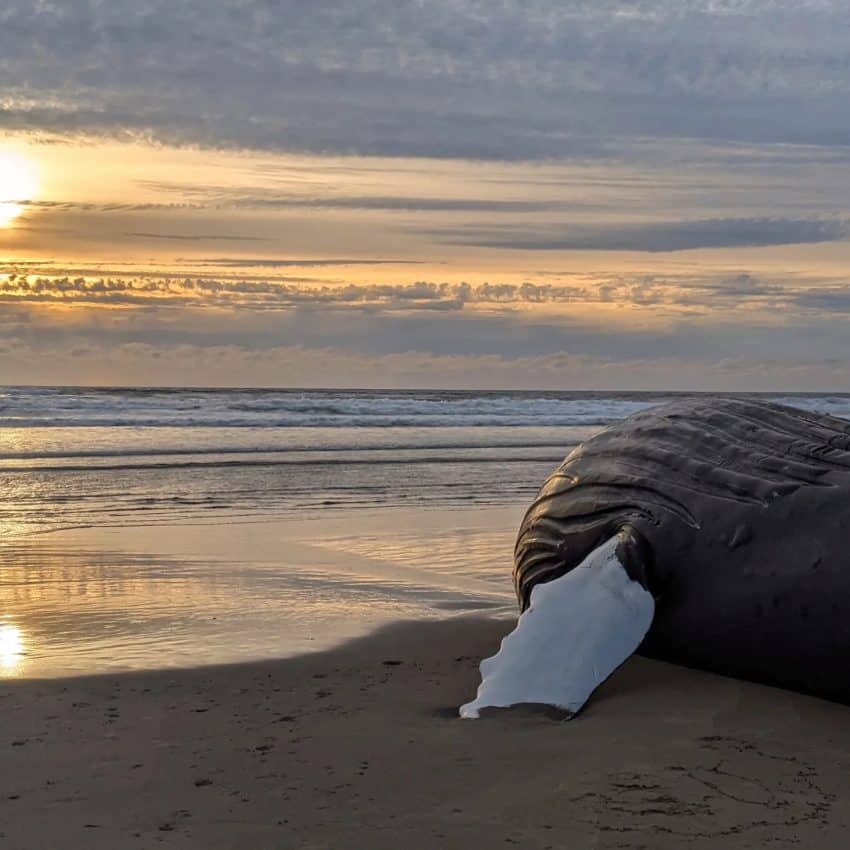A team of researchers completed a necropsy Thursday May 30th on a juvenile humpback whale that stranded at Nehalem Bay State Park earlier in the week (see video and links to stories below.) The necropsy found significant hemorrhaging along the right front and sides of the whale, suggesting that it was struck by a vessel. The team also collected tissue samples for further analysis.
Residents first reported the 34-foot male humpback whale floating off the Oregon Coast Sunday, May 26. The carcass drifted to shore a few miles south of Manzanita. A small team first examined and took samples from the carcass on Monday, May 27th. A larger team returned Thursday for a full necropsy. The team found bleeding, bruising and swelling along the right side of the whale’s head and sides. The injuries suggest a blunt force impact such as a vessel strike. Vessel strikes are one of the more common causes of death for humpback whales stranded on the West Coast, according to NOAA Fisheries’ most recent stock assessment. The stock assessment estimated the summer humpback population off Oregon, Washington, and California as at least about 5,000 animals and growing steadily.
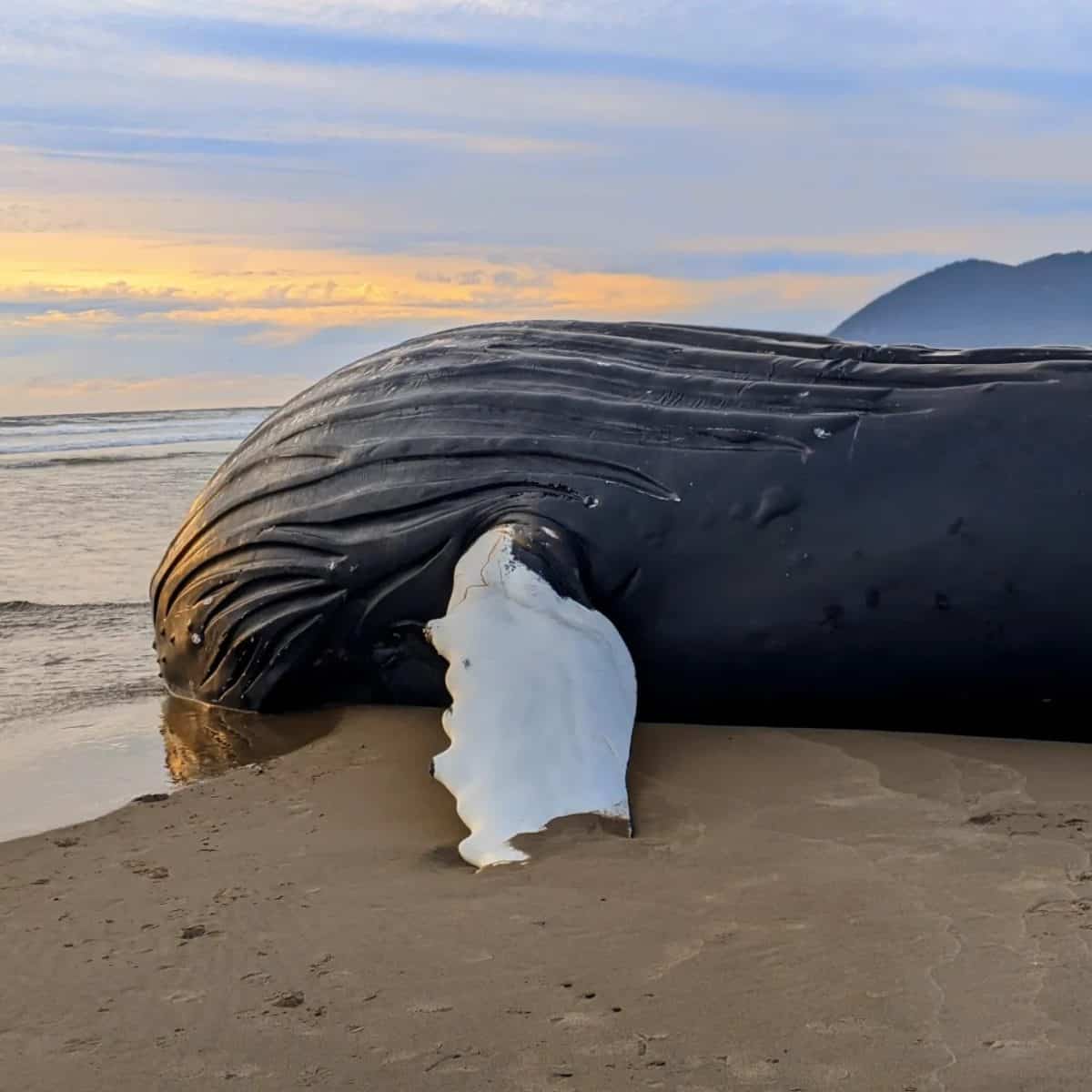
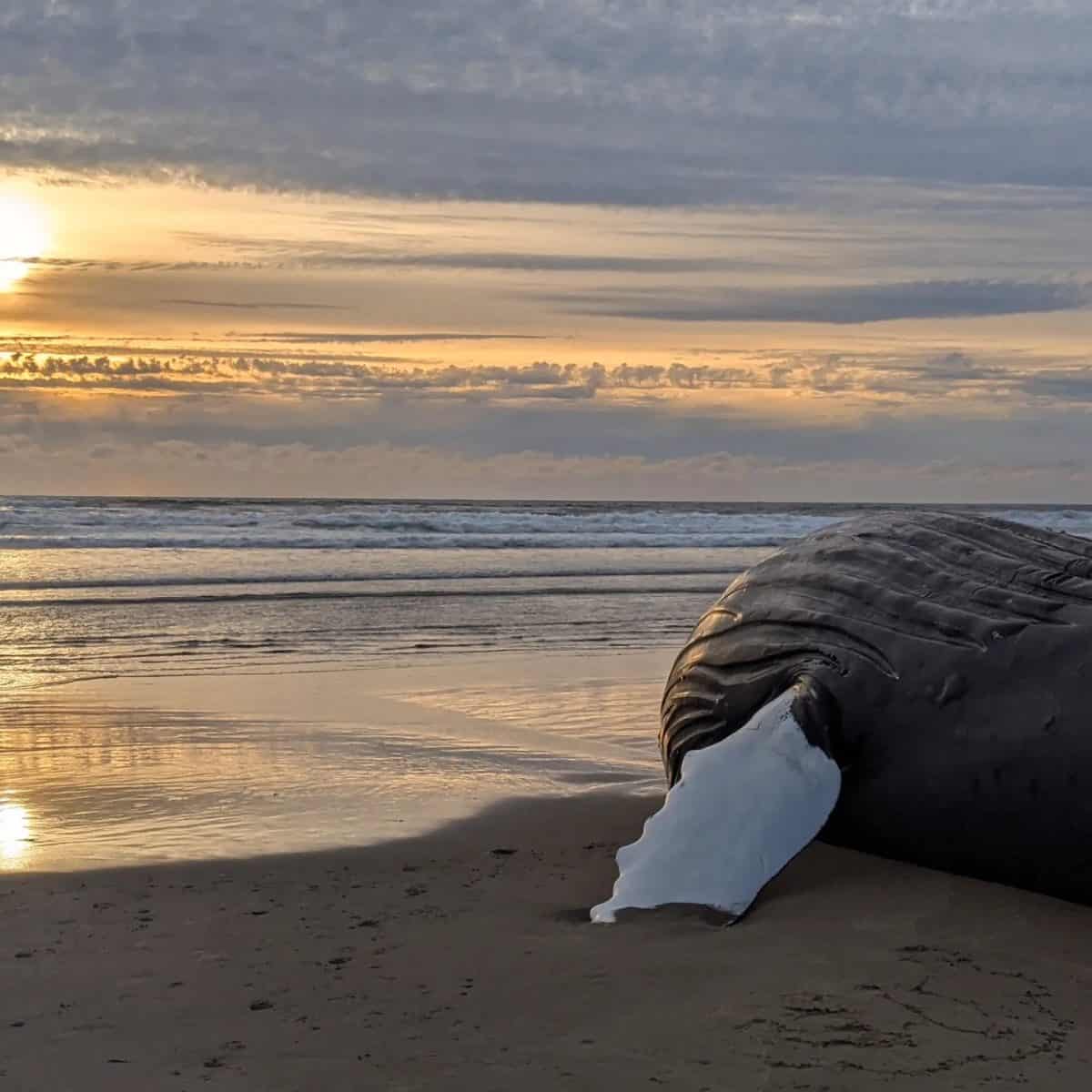
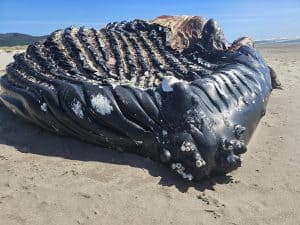
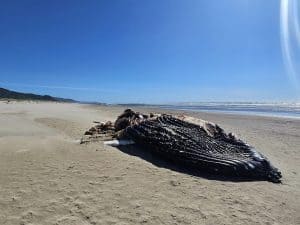
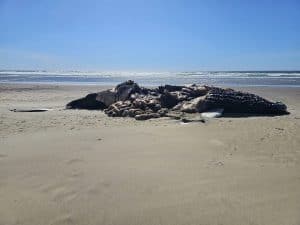
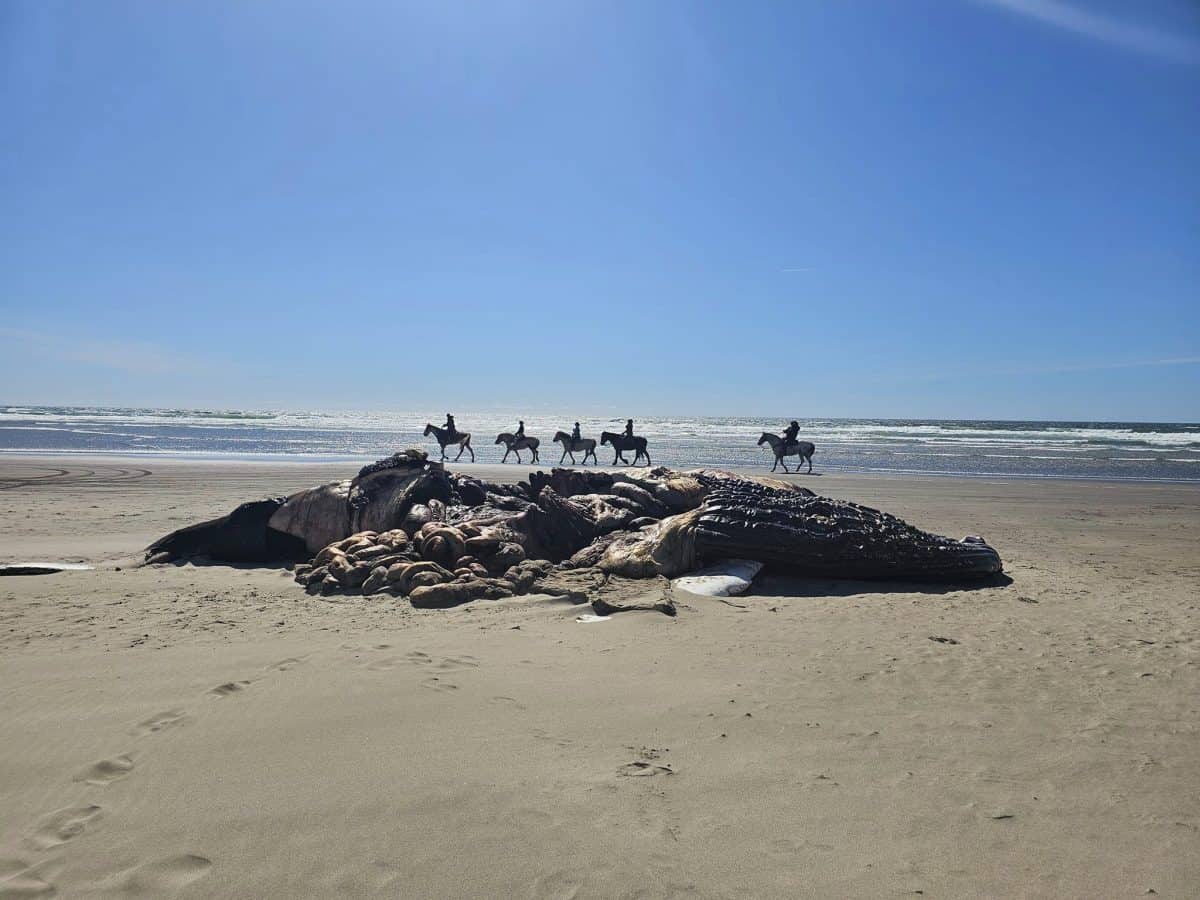
Portland State University responds to whale strandings on the northern Oregon Coast on behalf of the West Coast Marine Mammal Stranding Network and led the necropsy. NOAA Fisheries and PSU thank Oregon State Parks, Oregon Department of Fish and Wildlife, U.S. Fish and Wildlife Service, Cascadia Research Collective, and Seaside Aquarium for assisting with the necropsy. Oregon State Parks is urging the public not to visit the remains of the whale, which are no longer intact, to avoid further disturbing threatened western snowy plovers that nest nearby. Anyone entering the area must respect restrictions in place and stay only on wet, hard-packed sand. Dogs and bicycles are prohibited.
To report a dead, injured, or stranded marine mammal along the West Coast, please call the West Coast Region Stranding Hotline: 1-866-767-6114. Please do not disturb stranded animals so responders can assess any injuries and/or the cause of death.
<iframe width=”560″ height=”315″ src=”https://www.youtube.com/embed/i5v05npnBeg?si=taPpx8VEAGe1n9mP” title=”YouTube video player” frameborder=”0″ allow=”accelerometer; autoplay; clipboard-write; encrypted-media; gyroscope; picture-in-picture; web-share” referrerpolicy=”strict-origin-when-cross-origin” allowfullscreen></iframe>

